Have you heard people talking about the “science of reading”? What’s that all about?
You might have heard that it has something to do with phonics…
But there’s a whole lot more to it then that!
So in today’s post, I’m going to explain what people sometimes mean when they talk about the “science of reading,” what excites me and concerns me about this conversation, and the best, science-based practices you can take away and use in your classroom.
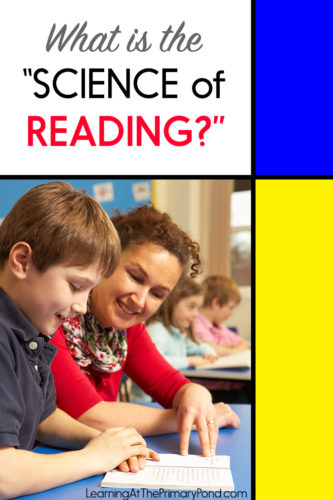
The Reading Wars
To understand the “science of reading” and this whole controversy, it’s important to have some background info about the Reading Wars.
The Reading Wars refer to a long-running controversy over the “best” way to teach reading. It’s a debate about whether phonics or whole language is best. You probably already know what phonics is, but maybe not whole language.
Whole language, if you’re not familiar, is a philosophy that focuses on making meaning from real reading and writing experiences. In a true whole language classroom, phonics are only taught “in context” – so for example, you might only teach the “ea” spelling pattern if you’re helping a child read the word “speak.”
The Reading Wars have been going on for decades. But in 2019, several major news outlets ran stories about how most teachers in the U.S. are teaching reading the “wrong” way. This poured fuel on the fire, and the reading wars were re-ignited.
So what IS the “science of reading”?
As you can imagine, there have been many, many scientific studies done about how children learn to read, reading in the brain, etc. The term “science of reading” should be used to refer to a wide body of research that encompasses many, many things – decoding, comprehension, fluency, etc. I actually created an entire course to hep you understand all aspects of the science of reading, and you can learn more about my course at this link!)
But when some people refer to the “science of reading,” what they actually mean is teaching phonics systematically and explicitly. In some schools, phonics was not sufficiently taught, so it’s an area that has been getting more attention as the science of reading becomes more prevalent.
Some educators also state that, per the science of reading, guided reading and leveled texts should not be used. Instead, students should read decodable (phonics-controlled) texts to practice the phonics patterns they’re learning.
A decodable text typically includes only A) words that students have learned as high frequency / sight words and B) words that students should be able to decode, because they only include phonics patterns that the students have been taught.

(This is an example of a decodable text from my phonics program, From Sounds to Spelling.)
Part of the science of reading movement emphasizes that children should not be prompted to decode words by considering what makes sense or what fits grammatically in a sentence (you may have seen the 3 cueing systems discussed as part of this conversation).
If you’re not familiar with the 3 cueing systems, here’s what they are:
M (Meaning) – Does the word you read make sense in the sentence?
S (Syntax) – Does the word you read fit grammatically in the sentence?
V (Visual) – Does the word you read match the letters/phonics patterns?
Instead, we want students to focus on decoding words using phonics. Brain scans show that this is how effective readers decode, so this is what we want our students to do instead of guessing at words.
These are just a FEW of the practices that are getting a lot of attention at the time that I’m writing this. But again, the science of reading is about so much more than just phonics and decoding. Phonological awareness, fluency, vocabulary, and comprehension are incredibly important pieces of the reading puzzle. You can learn all about them in my science of reading course.
What excites me about this conversation:
- I think this movement is a great wake-up call for many. In the U.S., we need to do a better job of teaching phonics to ALL our students! AND we need to do a better job of educating teachers on how to do that. Personally, I had to do a lot of reading and pay for training in this area because I didn’t feel prepared by my college courses.
- I hope this movement will bring better reading instruction to our students with dyslexia and other special needs! I’ve worked with so many students who have dyslexia or were struggling with reading for a variety of reasons. These students (and all students) really need explicit, systematic, multi-sensory reading instruction. I hope this conversation results in education better meeting their needs.
What concerns me about this conversation:
- In education, the pendulum tends to swing to extremes. I would hate to see the “baby tossed out with the bath water,” so to speak. There are many reading practices that have been going on in classrooms (pre “science of reading era) that ARE good. Let’s not view this movement as completely overhauling our reading instruction – but rather, as making shifts and changes to better serve our kids.
- In education, initiatives sometimes become oversimplified (see previous paragraph about the swinging pendulum!). Busy administrators or school leaders, who don’t fully have time to dig into research or understand context (they have a million other things to worry about!) may fail to see the nuances of this conversation. Or their school is struggling, and they believe that one single change (i.e. implementing more phonics instruction) will fix everything. This could lead to schools completely throwing out successful initiatives and focusing too much on rote phonics drills. I’m not saying that this will necessarily happen…but it’s just something to keep in mind.
- People are attacking each other in this debate. Not okay! It’s one thing to bring awareness and another thing to shame others. No one person has all the answers!! Although so much has been learned about how reading and the brain work, there is always more to be discovered. I think it’s important to realize that we are ALL still learning about teaching reading; no one knows it all. We do NOT need to be attacking each other.
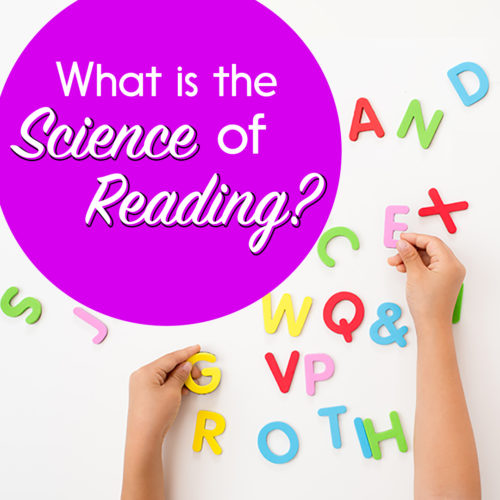
What you can do:
- Although the science of reading encompasses far more than just phonics, learning more about teaching phonics is a great place to start. If you don’t know much about teaching phonics or feel deficient in this area, please follow along with me. In the next few months, there are several opportunities for you to learn more.
- To listen to a FREE mini audio course on teaching phonics, go HERE.
- Join my FREE Facebook group that’s all about teaching phonics in K-2.
- Check out our phonics program, From Sounds to Spelling!
- Remember that you are likely doing MANY things correctly in your classroom when it comes to teaching reading. Make whatever changes you need to make, but don’t throw away everything you’re doing to focus solely on phonics instruction. Learn more about what to keep and what to change in my course.
- Pay attention to your language when you’re prompting readers. Encourage them to use the print – the letter sounds – when decoding. But when they monitor for meaning or self-correct because something didn’t sound right, praise that! Proficient readers DO naturally pay attention to more than just the letters on the page – they notice when something doesn’t sound right or doesn’t make sense, and then they go back and fix it (and we want them to use phonics knowledge to do so!).
- Be the voice of reason at your school. If you notice the pendulum swinging too far in one direction at the cost of certain areas of instruction (i.e. vocabulary, comprehension)…speak up!
I hope this post was helpful to you in understanding this debate. To learn much more about how to implement the science of reading in your K-2 classroom, read more about my course here!

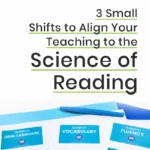
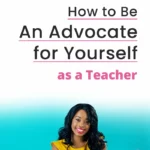

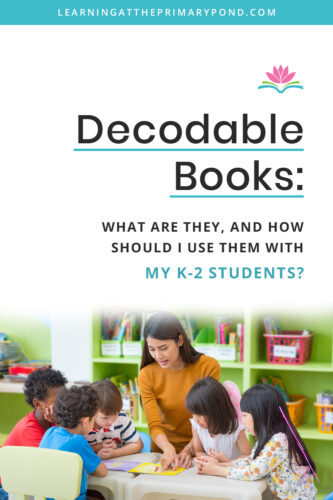
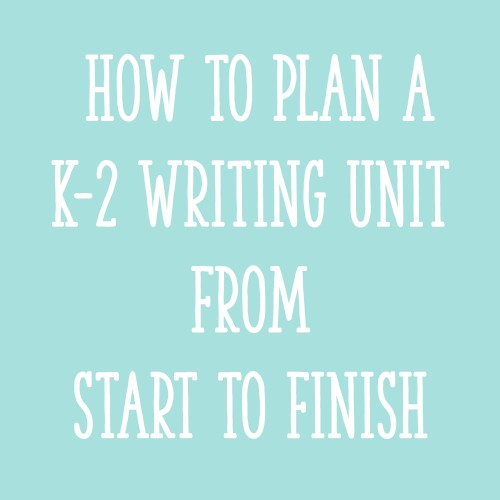
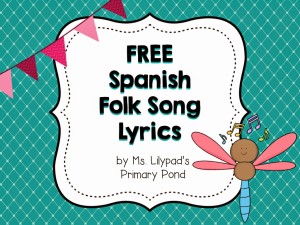






Alison, thanks for this excellent explanation. I love how you emphasise that we should not be attacking each other if we have a difference of opinion about “the best way” to teach reading. I am one of those teachers who believes explicit phonics instruction is necessary but am not a proponent of decidable text. I feel children need to be exposed to text which is more meaningful and which have more opportunities for us to include comprehension instruction as kids learn the code. I’m also concerned that there seems to be a limited discussion about teachers reading stories to children… Read more »
I’m right there with you, Judi!! It’s such a journey – a challenging one, but an exciting one, too. 🙂 Thanks for reading and commenting!
Alison
I was excited to read the article, knowing that there is growing momentum for bringing more evidence-based practices into typical reading instruction in most of our nation’s schools. You have a wide audience, so I was hopeful this would attract some interest in what the science of reading is and launch people on a journey of learning more about it… sadly, I don’t think you have adequately represented even a small bit of it in this article. You start and stop with phonics instruction. That is the basis of the “reading wars”. Essentially by describing science of reading as more… Read more »
Hi Sarah! That was actually part of my point in the article – that right now, the “science of reading” is being correlated with just phonics instruction, but there’s so much more to it than that. I did state that in the article a few times, but I probably didn’t go into enough detail on what the “other stuff” was. Thank you for the feedback! This particular blog post series that I’m starting, however, IS about phonics instruction, which is why it’s the focus of the end of this post.
Alison
What does the SoR ela block look like? What are other kids doing when you are in small group?
Hi Deb! Here is a Blog I wrote about what Literacy Centers could look like: Literacy Centers This should give you some insight into what other kids are doing when I’m leading a Guided Reading group – hope this helps!
Hi Alison, I’ve been using a lot of your resources and have attended several of your webinars over the years, and I always highly recommend your work to colleagues. So, first I just want to say thanks for all you do for teachers and students! My main question after reading this article is: How you would defend using the “look at the picture” and “think about what makes sense” strategies that you teach in your guided reading lessons? I would also be very appreciative of any feedback/guidance/research you offer concerning the following thoughts and questions: In my first grade classroom… Read more »
Hi Abbey! Such great questions and so amazing that you’re doing this thinking!! First, I do wonder if you have an older version of the guided reading bundles. Those strategies are no longer in there (you can re-download on TpT or email support@learningattheprimarypond.com if you purchased directly through me). I do teach look at the picture or text features for *comprehension* purposes, just not decoding. And “think about what makes sense” can be helpful *after* kids have tried to decode the word first by using phonics knowledge – like if they can come up with a word similar to the… Read more »
I’m so glad I found this blog post. I was actually looking for a different blog post about classroom management, but stumbled upon this and have been wondering about the great debate! I started teaching during the whole language movement, and I remember thinking as a young teacher, Aren’t phonics AND whole language both good for students? I have been a teacher for 26 years, and have had very little phonics training over the years. I once worked with a great sped teacher who taught the phonics lessons in my classroom, and I learned so much from watching her lessons,… Read more »
Glad this was helpful, Julie! And how cool that you learned so much from a fellow teacher!!